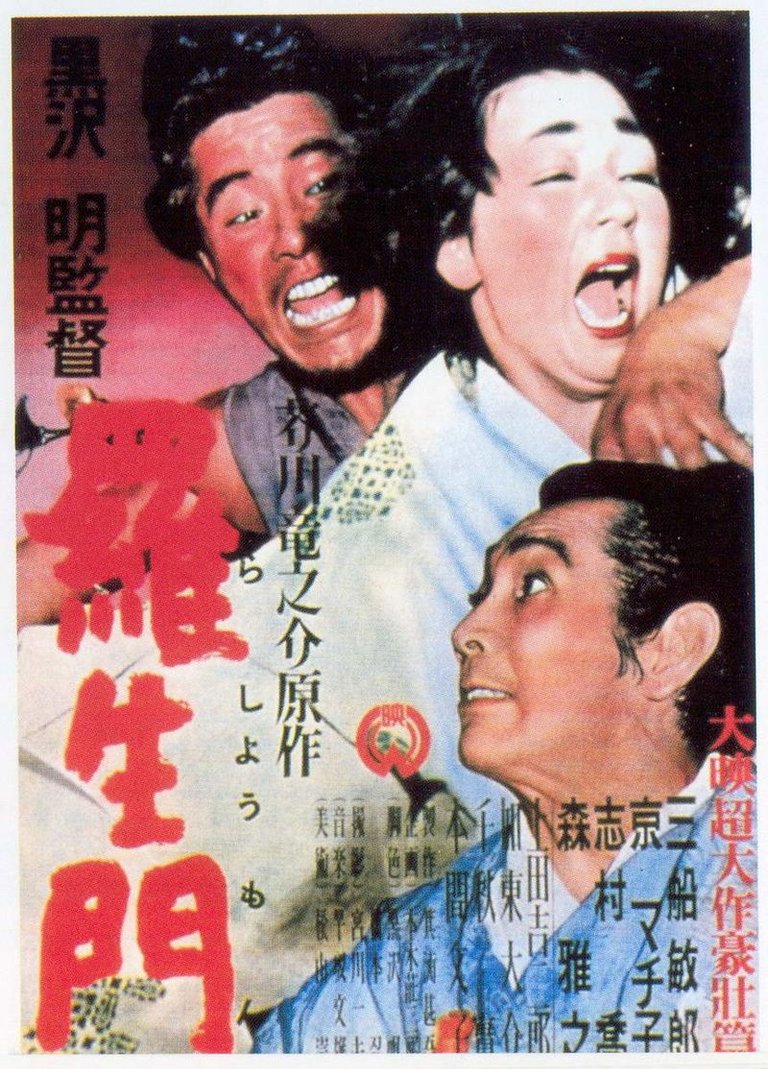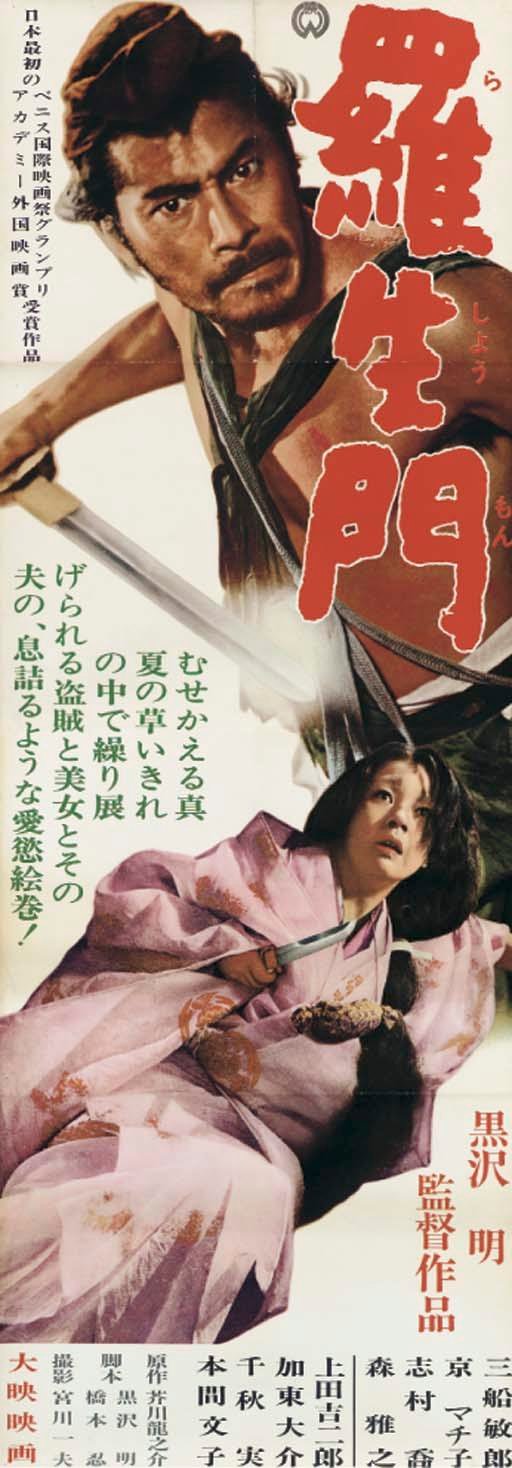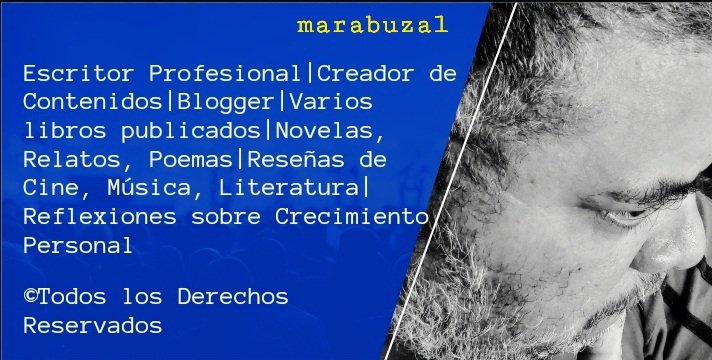Is there such a thing as truth? Rashōmon and the lies that define us [ENG-ESP]

🌍 Introduction: A Work That Defies the Inexplicable
How can a country devastated by two atomic bombs create a film like Rashōmon? That question haunts me every time I remember this masterpiece. It doesn't just entertain; it shakes you up, forces you to look at the world—and yourself—in a different way. That's why, without hesitation, I'm including it in my "Ten Films That Shook the World" series, which I'm sharing with this fabulous community at #cinetv.
The murder of a samurai and the assault on his wife are at the heart of the plot.
Kurosawa sets it in 12th-century Japan and does it like what he is: a genius. He tells us this same event from four radically different perspectives. It seems like a puzzle. And it is a puzzle. There are distorted egos, fears, hidden desires...
Fascinating!
"The 'Rashōmon effect' was born here: truth is not absolute, but a mosaic of subjectivities."
🎭 Lessons from a Master: Narrative According to Kurosawa
In 2000, during my course at the Onelio Jorge Cardoso Literary Training Center (Havana), Professor Eduardo Heras León explained to us why this film was required for every storyteller. Those lessons—about ambiguity, points of view, and morality—still serve me well in resolving my own stories.

🎨 Technical Innovation: Photography and Symbolism
Kazuo Miyagawa's photography is another character in the story:
- Brutal chiaroscuro: The sun filtering through the forest symbolizes the truth/lie duality.
- Moving Camera: Dynamic shots that reflect the subjectivity of each testimony.
- Rain and Decay: The scenes beneath the Rashōmon gate drip with melancholy and moral corruption.
"Miyagawa eliminated the filters: the stark black and white plunges us into chaos. Even the actors' sweat seems to scream."
🔥 The Risk of Creating Something Authentic
Curiously, Rashōmon was almost never filmed. The producers dismissed it as "weird" and no one understood its potential. But as always happens with true art, what at first seems incomprehensible ends up shaking the world. Kurosawa showed that, even in ruins, the human spirit can create beauty.
💡 Conclusion: An Eternal Labyrinth
Rashōmon isn't just cinema: it's a philosophical challenge. In the end, we emerge from the labyrinth with more questions than answers:
- Is there a single truth?
- How do we deceive ourselves when narrating our own lives?
Unmissable, disturbing, and brilliantly ambiguous, its legacy is as inexhaustible as human nature.
👉 Have you seen it yet? Share your interpretation in the comments!



🎬 ¿Existe la verdad? Rashōmon y las mentiras que nos definen
🌍 Introducción: Una Obra Que Desafía lo Inexplicable
¿Cómo puede un país, devastado por dos bombas atómicas, crear una película como Rashōmon? Esa pregunta me persigue cada vez que recuerdo esta obra maestra. No solo entretiene; te sacude, te obliga a mirar el mundo —y a ti mismo— de otra manera. Por eso, sin dudarlo, la incluyo en mi ciclo "Diez películas que estremecieron el mundo", que comparto con esta fabulosa comunidad de #cinetv
🎥 ¿Por Qué Rashōmon Es una Piedra Angular del Cine?
El asesinato de un samurái y la agresión a su esposa constituyen en el centro de la trama.
Kurosawa la ubica en el Japón del siglo XII y lo hace como lo que es: un genio. Nos cuenta este mismo acontecimiento desde cuatro perspectivas radicalmente diferentes. Parece un rompecabezas. Y es un rompecabezas. Hay egos distorsionados, miedos, deseos ocultos...
¡Fascinante!
"El 'efecto Rashōmon' nació aquí: la verdad no es absoluta, sino un mosaico de subjetividades".
🎭 Lecciones de un Maestro: La Narrativa Según Kurosawa
En el año 2000, durante mi curso en el Centro de Formación Literaria Onelio Jorge Cardoso (La Habana), el profesor Eduardo Heras León nos explicó por qué esta película era obligatoria para todo narrador. Esas lecciones —sobre la ambigüedad, los puntos de vista y la moral— aún me sirven para resolver mis propios relatos.

🎨 Innovación Técnica: Fotografía y Simbolismo
La fotografía de Kazuo Miyagawa es otro personaje en la historia:
- Claroscuros brutales: El sol filtrándose en el bosque simboliza la dualidad verdad/mentira.
- Cámara en movimiento: Planos dinámicos que reflejan la subjetividad de cada testimonio.
- Lluvia y decadencia: Las escenas bajo el portón de Rashōmon gotean melancolía y corrupción moral.
"Miyagawa eliminó los filtros: el blanco y negro crudo nos sumerge en el caos. Hasta el sudor de los actores parece gritar".
🔥 El Riesgo de Crear Algo Auténtico
Curiosamente, Rashōmon casi no se filma. Los productores la tacharon de "rara" y nadie entendía su potencial. Pero como siempre pasa con el arte verdadero, lo que en un principio parece incomprensible, termina estremeciendo al mundo. Kurosawa demostró que, incluso en las ruinas, el espíritu humano puede crear belleza.
💡 Conclusión: Un Laberinto Eterno
Rashōmon no es solo cine: es un desafío filosófico. Al final, salimos del laberinto con más preguntas que respuestas:
- ¿Existe una verdad única?
- ¿Cómo nos engañamos al narrar nuestras propias vidas?
Imperdible, perturbadora y genialmente ambigua, su legado es tan inagotable como la naturaleza humana.
👉 ¿Ya la viste? ¡Comparte tu interpretación en los comentarios!


Vale la pena. Gracias ❤
Siendo sincera, no la he visto. Pero ya la sumé a mi lista de filmes pendientes 🙏🏻
Estupendo!
[@PowerPaul:]
Hey! Because of your participation in the @CryptoCompany community and your participation in the "Banner for Boost" campaign you received a vote from your CryptoCompany and its trail! Thank you & Hive a great day!
Recent posting from @PowerPaul or the CryptoCompany network:
by @cryptocompany
by @cryptocompany
by @powerpaul
Kurosawa me sorprende con cada película, de él he visto Rashomon, Ran, Kagemusha y Shichinin no Samurai. Ando persiguiendo Trono de Sangre, pero lo malo es que cada vez que logro localizar una película de Kurosawa la encuentro en copias de pésima calidad. Rashomon la vi en tan mala calidad que hubo escenas que necesité repetir tres veces solo para discernir lo que sucedía.
Lo que me gusta del cine de Kurosawa en general es que la fuerza de su narrativa visual es suficiente para arrastrar el público, no necesita edulcorar ni recurrir a las mil trampas rosaditas del cine moderno.
Rashomon en particular la disfruté muchísimo, sobre todo en su calidad de fábula de profundo contenido budista.
Es un maestro. Sin dudas. Lo es y lo demuestra.
@topcomment
Impressive review. Only someone like you can capture the impact of such a work. It's already made me want to revisit it again. Best regards.
!BBH
Con muchos placer recibo tu comentario, hermano. Esta es una de esas películas que uno ve de cuando en cuando, para rescondarse lo bien hecha que pueden estar las cosas.
El arte genuino, perdura.
Un abrazo ✍️
Su post ha sido votado por Green Zone.
Te invitamos a participar en nuestra comunidad
Para más detalles aquí te explicamos
@marabuzal, I'm refunding 0.062 HIVE and 0.013 HBD, because there are no comments to reward.